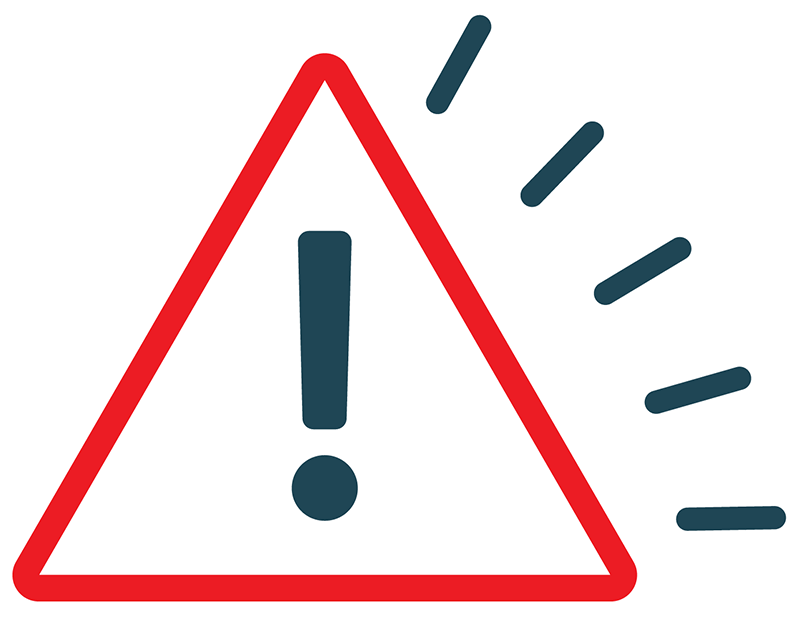
Traditionally, discussions about Disaster Recovery (DR) Plans tend to emphasize technology-related crises. However, recent global events, such as the pandemic, have illuminated the necessity for DR plans to be adaptable and encompass a broader spectrum of potential challenges.
This article delineates specific disaster categories, but recognizing that each organization’s unique circumstances might entail distinctive scenarios, such as compliance or regulatory issues, is essential. Moreover, some conventional disaster types may be irrelevant to your business, allowing for tailored adjustments to your DR plan.
The core principle of effective DR planning revolves around acknowledging that no two organizations are entirely alike. Thus, a thoughtful consideration of how your organization classifies and addresses disasters is paramount, ensuring that your plan is finely attuned to your specific needs and susceptibilities.
Within the context of disaster preparedness, we can categorize disasters into three primary groups:
1. Physical Disasters
2. Technology-driven calamities
3. Natural Disasters
Physical disasters
Physical disasters encompass a spectrum of adverse events that can impact your organization. These include:
- Security breaches:
Unauthorized access,
Break-ins. - Facility-related problems:
Structural damage to roofs,
Burst pipes. - General infrastructure failures:
Power or water supply disruptions. - Malfunctions in heating and cooling systems:
Rendering the workplace non-operational.
Similar to natural disasters, physical disasters can profoundly affect how and where your organization operates. For example, a power outage may require a temporary shift to remote work. Depending on your assets, you might need to relocate your workforce and technology infrastructure. In cases involving heating or cooling system failures, a physical disaster could escalate into a technology disaster, posing potential disruptions to your operations.
To respond effectively to physical disasters, follow these steps:
Identify third-party partners for collaboration:
Knowing the third-party entities with whom you must collaborate during these disasters. For instance, immediate knowledge of your HVAC vendor’s contact information is vital if your HVAC system fails, leading to overheating in your server room. Furthermore, ensure that your service agreements with these third-party providers incorporate robust service-level arrangements that align with your responsiveness requirements during a disaster. These vendors can also provide valuable insights into expectations in a disaster scenario.
Understand how to adapt your work for short- and long-term scenarios:
It is essential to grasp how to reestablish your work temporarily and plan for the long term. Major power grid failures are typically of short duration, necessitating a focus on short-term recovery solutions. Conversely, substantial physical disasters like roof collapses may take months to resolve. Conduct an impact analysis to determine appropriate adjustments for both temporary and long-term continuity.
Technology-driven calamities
In our contemporary landscape, the specter of Technology-Based Disasters looms large, casting a web of intricate challenges that organizations must confront. These adversities encompass a multifaceted array:
Like formidable titans, technology disasters are often an organization’s most prominent foes. They wield diverse levels of impact and necessitate a profound reservoir of expertise for adequate preparation.
However, amidst these ominous digital storm clouds, hope persists. Technology Disasters come with an array of remedies and assistance from a plethora of vendors. While the investments required to safeguard against them might be substantial, they are arguably the most controllable of disasters.
Nonetheless, it’s essential to recognize that not all technology-induced setbacks are equivalent in their impact on the organization. Some may warrant a different approach to resolution, distinguishing between incidents and full-blown disasters.
Deciphering the ripples of technology disasters
To truly fathom the ramifications of Technology Disasters on your organization, one must explore the kaleidoscope of ways these incidents can manifest and their unique impacts on your specific context.
Diving into the essence of technology
Rather than fixating on the cold machinery and code, delve into the essence of technology within your organization. Understand its role in shaping operations, functions, and the intricate dance it orchestrates behind the scenes.
Identifying the pinnacle threats
By discerning the technology’s role in various organizational functions, you can pinpoint the incidents that hold the potential to burgeon into full-scale disasters. This discernment empowers you to allocate resources judiciously, reserving a full-throttle response for the most critical scenarios while managing other challenges with grace and poise, ensuring the business’s uninterrupted flow.
Guarding against the abyss of irrecoverable data loss
Technology disasters, especially those involving data breaches and loss, can have dire consequences, endangering your organization’s existence.
The formidable challenge of data loss: Complete data loss presents a daunting challenge that can cripple operations and lead to severe consequences.
Legal risks from data breaches: Data breaches compromise security and open your organization to potential legal liabilities and complex legal situations.
Critical need for data backup plans: It is vital to establish comprehensive data backup and recovery strategies to preserve the integrity and accessibility of essential data, especially during turbulent times.
How to navigate technology disasters effectively
Begin by identifying specific technology-related disaster scenarios that could beset your organization. Create a response plan meticulously tailored to address these contingencies. Assemble a dedicated response team, including third-party vendors like Hystax, that helps you facilitate acquiring the necessary technology for resolving and restoring systems to their pre-disaster state.
Establishing a solid communication strategy for technology disasters
When facing a technology disaster, having a well-thought-out communication plan covering your internal team and external stakeholders is essential. Take a comprehensive approach, considering those with a vested interest, such as customers, partners, and legal entities, not only during the crisis but also in the aftermath, especially if there are legal ramifications. Effective communication hinges on transparency. Here’s what to be prepared to convey:
Root cause investigation: Explain the approach taken to determine the root cause of the disaster.
Resolution steps: Outline the actions to rectify the issue and restore normalcy.
Incident nature: Clearly describe the spirit and scope of the technology disaster.
Preventive strategy: Share the organization’s strategy for preventing similar incidents in the future.
Natural disasters
Natural disasters present a spectrum of potential challenges, including:
- Data Center Loss: Complete data center failure.
- Inundating Floods: Work-inhibiting floods.
- Infrastructure Storm: Critical systems disrupted.
- Office Fire: Workplace fire risks
- Health Crisis Impact: Staff health crises.
Understanding the impact of natural disasters
The repercussions of natural disasters can vary significantly depending on your organization’s infrastructure and the event’s severity. Here are essential considerations to ponder:
Reflecting on workflow: Consider the broader implications of natural disasters, such as the transformative impact of the COVID-19 pandemic on work practices. Future public health crises could necessitate significant adjustments to your workflow once more.
Evaluating communication methods: Contemplate how flooding or storms might disrupt communication channels. Assess the resilience of your phone systems, cell phones, power sources, and even infrastructure components like plumbing and fire control in the face of a natural disaster.
Assessing physical assets: Examine the physical assets that could be vulnerable to the effects of a natural disaster. For example, if your organization heavily relies on a server closet in a primary office, the impact of natural disasters will be more profound compared to an organization using Cloud or Software-as-a-Service (SaaS) solutions.
Adapting to natural disasters: rethinking work strategies
When confronting Natural Disasters, the primary emphasis is often on adapting to new work approaches and communication methods. The pandemic serves as a compelling example of this paradigm shift. In most cases, organizational technology infrastructure didn’t simply fail overnight. Instead, the impact necessitated a transformation in work practices. This often involved using different devices, remote connections to servers and applications, and implementing new security protocols, among other adaptive measures.
In the final analysis, comprehending the intricate relationship between your assets, technological infrastructure, and the specific characteristics of a natural disaster is paramount in gauging its effect on your organization. These questions form the foundational pillars of an effective Disaster Recovery (DR) plan.
In summary
Disaster Recovery planning is a complex task involving anticipating a wide range of likely and less probable events. Regular review and re-evaluation of potential disasters impacting your organization is crucial to maintaining an effective plan and consistent testing to ensure the plan’s real-world effectiveness. Remember that disaster recovery planning is an ongoing process, not a one-time endeavor. To prepare your organization for successful recovery from disasters, prioritize identifying potential events, assessing their impact, and establishing procedures to minimize serious consequences whenever feasible.
💡Key advantages of Disaster Recovery as a Service (DRaaS) for your business? → https://hystax.com/why-disaster-recovery-as-a-service-is-essential-for-business/



